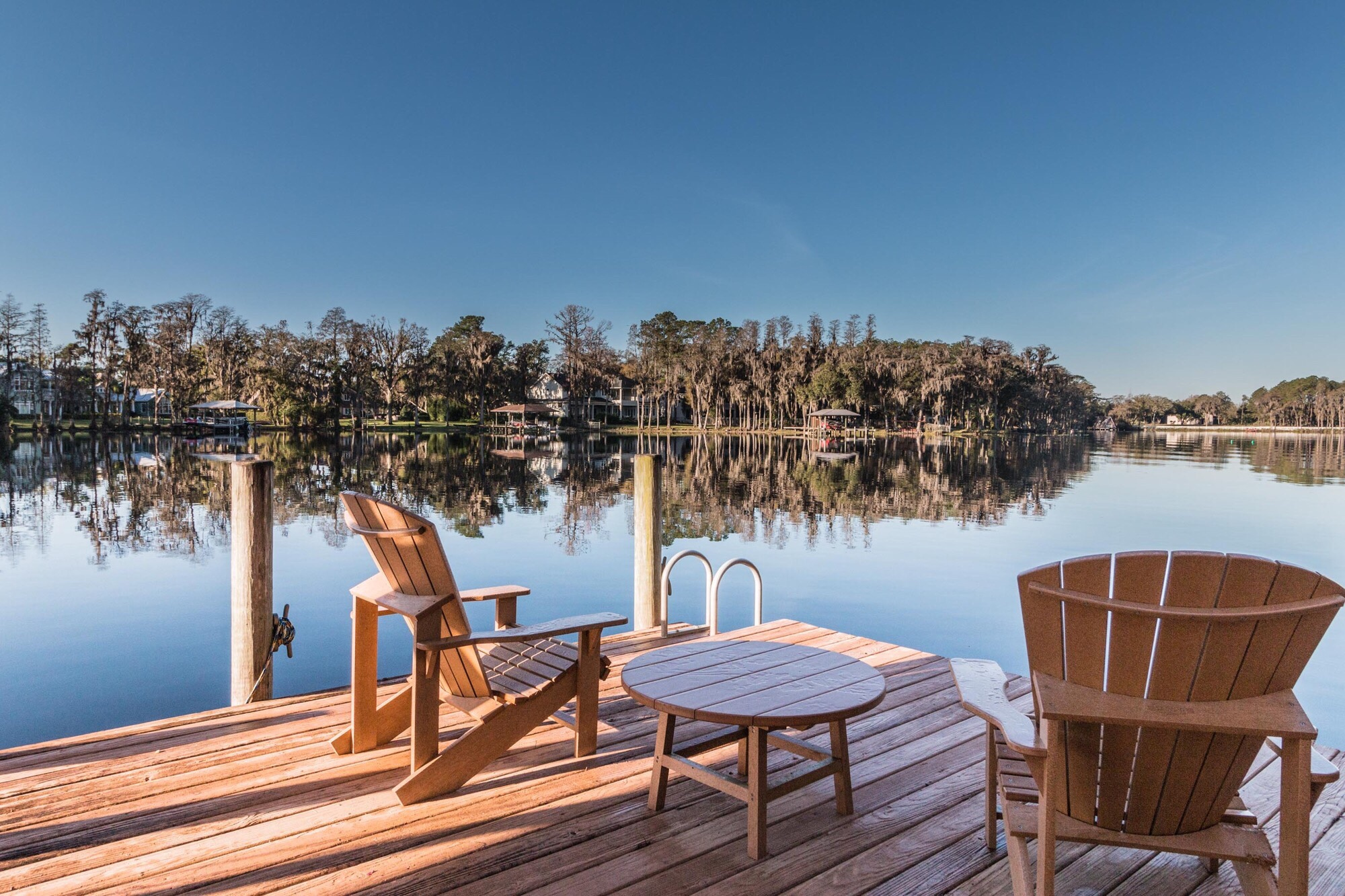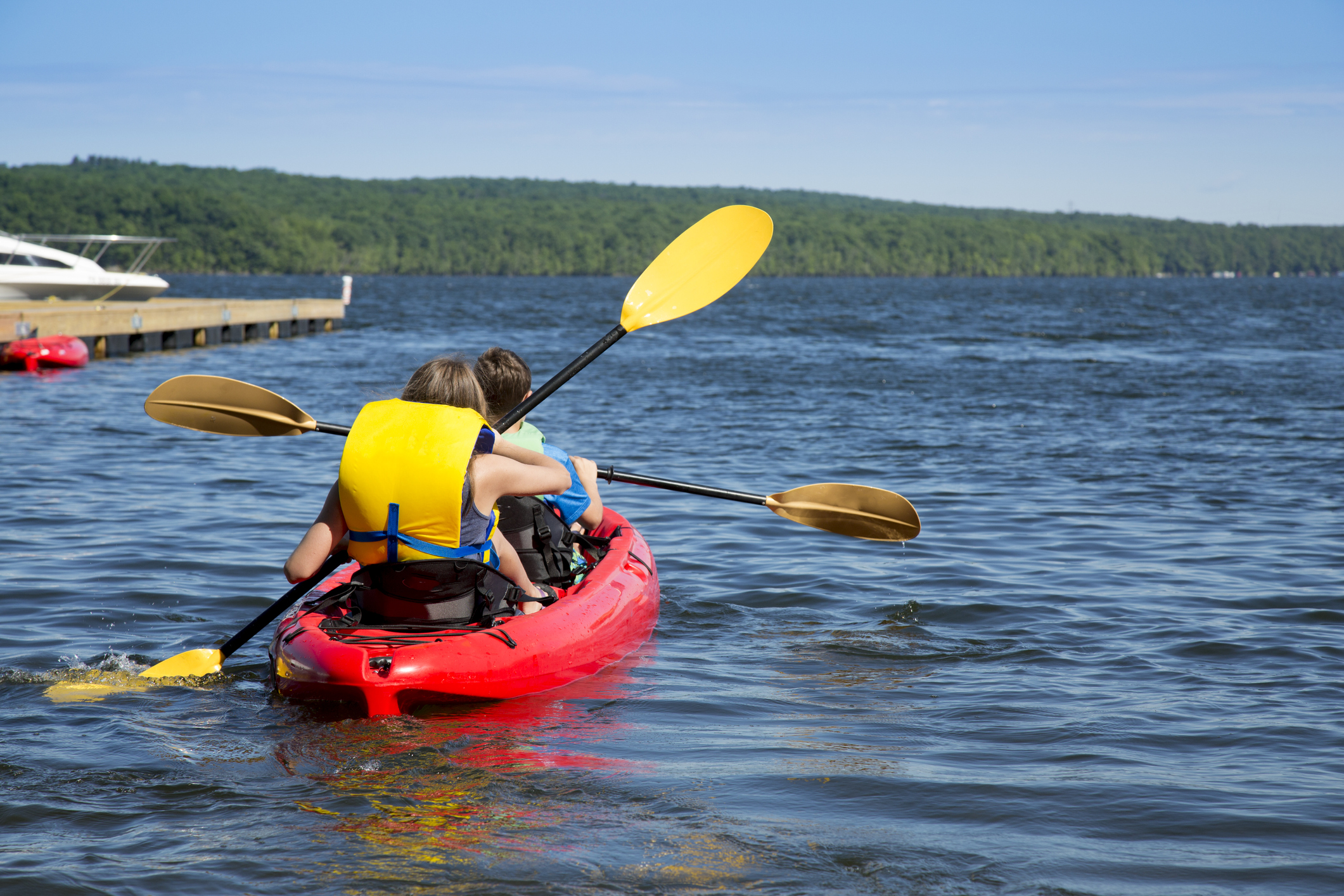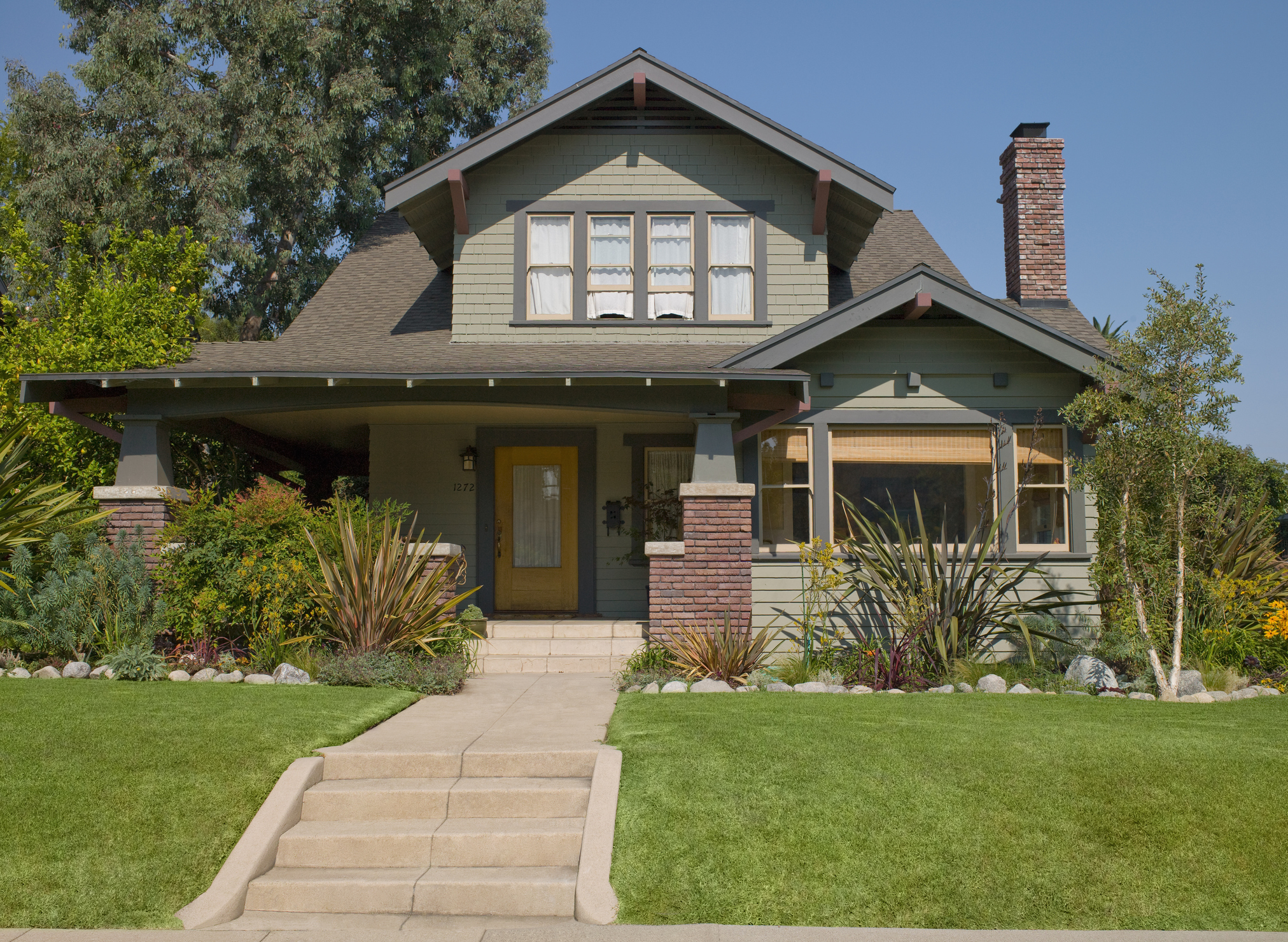5 Great Places to Buy a Vacation Home
Vacation homes under $400K with low climate risk? We've got you covered.


These days, the prospect of buying a vacation home is still alluring, but trickier to pull off than just a couple of years ago. Mortgage rates have risen from historic lows, and inventory remains low. The COVID-19 pandemic supercharged the practice of working from home; many employees continue to work remotely, giving them the freedom to virtually check in to the office from just about anywhere.
Getting the house of your dreams may be a challenge. Mortgage rates have risen dramatically since their pre-pandemic lows, and tight inventory continues to prop up prices. During the pandemic, soaring home prices and other factors in California fueled an exodus to more affordable areas in the Southwest and West, leaving slim pickings for those looking for a second home in states like Arizona. The pandemic also coincided with a surge in natural disasters like forest fires, mudslides and flooding — making some vacation destinations less attractive as relaxing retreats or investments.
Here, we’ve highlighted five vacation areas around the country to suit every taste, featuring seaside towns with sandy beaches, mountain getaways for hikers, skiers and snowboarders, and lake retreats for boating and fishing enthusiasts. You have a shot of snagging a great home at an affordable price at these locations, based on inventory and price data from Realtor.com. As of January, homes listed for sale in each county represented had a median price of no more than $400,000 — and in some cases, median prices were significantly lower.
The very qualities that make vacation destinations so attractive — lush pine forests, oceanfront and freshwater access — also make them particularly vulnerable to wildfires, hurricanes and flooding. So, we account for potential damage from extreme weather. Using data from riskfactor.com, the Kiplinger team excludes counties that have an “extreme” or “severe” risk of flooding, fire or wind damage. The exception is Myrtle Beach, SC, which has a “severe” wind damage risk, but in our opinion, still has newer properties or more inland locations that are worth buying.
Keep in mind, however, that even if you buy a property that is not at great risk, highly vulnerable communities may have a hard time getting affordable insurance, and infrastructure and businesses may be out of service for long periods after a natural disaster. In some states, like California and Florida, some home insurance companies have withdrawn from the market or refused to cover certain areas. And when you consider the total monthly payments of your new home, you may need to include extras like flood insurance.
Since climate risks can vary from property to property within the same county, it's a good idea to check riskfactor.com for the specific home you might buy.
Take a look below and start dreaming.

Rutland County, Vermont
- County: Rutland
- January 2025 median list price: $325,000
- March 2024 median list price: $350,000
- March 2023 median list price: $323,500
- March 2022 median list price: $270,500
If it’s charm and the great outdoors you crave, look to Vermont. Rutland County's median list price has been ticking up, but it still comes in at just under $400K. The county is home to the Killington Ski Resort, which offers skiing, snowboarding and mountain biking. The resort also hosts an annual “Dazed and Defrosted” spring festival. The Appalachian Trail passes close to Killington Peak, and outdoor adventure companies offer highly-rated kayaking, hiking and other trips.
Also nearby are the Green Mountains and other hiking trails, a climbing gym and the Wonderfeet Kids' Museum. There’s plenty of cultural entertainment, with theaters, the Norman Rockwell Museum and other art galleries, and Middlebury College just up the road.
If skiing or golf is your thing, there is a $225,000 condo near the slopes of Killington, offering two bedrooms, 1.5 baths and a fireplace. The unit has mountain and golf course views and 900 square feet.
The climate risk tool, Riskfactor, rates Rutland County as having only "moderate" flood risk, but parts of the county were affected by a massive flood event in July 2023. If you drill down to specific properties, you may find that some have extreme flooding risk, while others have minimal risk.

Myrtle Beach, South Carolina
- County: Horry
- January 2025 median list price: $299,900
- March 2024 median list price: $309,900
- March 2023 median list price: $349,995
- March 2022 median list price: $395,498
If sand and ocean waves are on your must-have list, you can find them at Myrtle Beach and other beaches on the 60-mile “Grand Strand” lining the South Carolina coast. Besides relaxing and swimming at the shore, Myrtle Beach visitors can wander the boardwalk and promenade — which features shops and restaurants and stretches more than a mile along the beach — head to one of the area’s amusement or water parks, or check out one of the many free festivals, parades and concerts held throughout the year.
Golfers are drawn to the area’s challenging and beautiful greens and have their pick of nearly 100 courses. Shoppers can browse flea markets, factory outlets and everything in between. When you need a break from the beach scene, take a kayak or paddleboard to the Waccamaw River or birdwatch at the surrounding 55,000-acre Waccamaw National Wildlife Refuge.
Myrtle Beach has been on a building spree over the past few years, according to a study by the Insurance Inspection Network. That’s good news for home buyers, as added inventory helps cushion demand and slow price growth. And in an area vulnerable to storms, buying newer properties means that consumers will benefit from updated building codes that better protect against environmental risks. Yet some local leaders have been fighting against stricter building codes that would protect against storm surges and other risks. To get a sense of some of the issues homeowners face, check out the Horry County Rising website. This non-profit is working to improve wetland and storm management to help residents.
For those wanting an oceanfront condo, consider the risks from poorly maintained or designed buildings that may face structural damage — a top-of-mind risk for older condominiums since the 2021 collapse of a Florida condo building. Be sure to understand the reserve funds and inspection history of any condo unit you may want to buy, and review the Post and Courier list of vulnerable South Carolina condos.
Poor ocean water quality and toxic algae blooms have been a growing problem in South Carolina and nearby coastal states. Myrtle Beach tracks water quality and issues swim advisories when necessary. These advisories typically shouldn't keep you from enjoying the beach, and the town does a good job of explaining when there is risk and what you might need to do to avoid it. For example, in some areas, you may not want to put your head underwater when there is a swimming advisory.
Recently, a 20-year-old, $360,000 home in Myrtle Beach featured 2,245 square feet of space, four bedrooms, two bathrooms and a garage. The homeowners association (HOA) fee is $36 per month. Since the property is about a 15-minute drive inland from the beach, the flooding risk is only minimal (though wind and heat risks are severe).
If you must be on the waterfront, there is a 1,090-square-foot condo in a newer high-rise right on the beachfront for $249,900, with two bedrooms and two baths. The HOA fee is $508 per month.

Hot Springs, Arkansas
- County: Garland
- January 2025 median list price: $329,500
- March 2024 median list price: $330,950
- March 2023 median list price: $289,900
- March 2022 median list price: $275,000
Nestled in the Ouchita Mountains, Hot Springs was founded as a spa town in the 1850s, and much of that focus on relaxation and natural beauty remains. This small city’s main attraction is the Hot Springs National Park, where you can still soak in the thermal waters in some of the original bathhouses built in the early 1900s (the outdoor springs are too hot for bathing).
Kids will enjoy the nearby Mid-America Science Museum, mini-golf, an adventure park and swimming in nearby lakes. Hot Springs also has an art scene, with many galleries, artisans and a community theater. Property-related crime rates have been ticking up in the city, so be sure to research neighborhood safety before buying a home.
In the community of Hot Springs Village, a three-bedroom, two-bath home near Coronado Lake goes for $299,000 and HOA fees of $146 per month. The home has a fireplace, vaulted ceilings and a hot tub. The Village community boasts 12 lakes, 15 tennis courts, nine golf courses and over 30 miles of trails.

The Pocono Mountains
- Counties: Monroe, Pike and Wayne, Pennsylvania
- January 2025 median list price: $329,900 to $342,000
- March 2024 median list price: $349,000 to $350,000
- March 2023 median list price: $318,000 to $349,000
- March 2022 median list price: $341,627 to $349,700
You can ski, hike, fish and boat to your heart's content in the Pocono Mountains, which are convenient to New York City and Philadelphia and draws some 28 million visitors each year. Skiers and snowboarders can choose from more than 185 hills and trails, ranging from bunny slopes to double black diamonds. Or try out other winter activities, such as snow tubing, cross-country skiing and snowmobiling.
In warmer months, tee up at any of the region’s many golf courses, which offer a variety of terrains to challenge golfers. To keep the kids happy, take them to play mini golf or laser tag, drive go-karts, or splash down water slides at one of the area’s family entertainment centers.
Skiers who want to be near Camelback Mountain can find a townhome for less than $400,000. In the Northridge community, a three-bedroom, two-bathroom unit with 1,367 square feet of space and a deck recently had a $310,000 price tag. The unit is well-maintained, walkable to the ski resort, and has HOA fees of $425 per month. Is a lake retreat more your style? In Pocono Pines, a two-bedroom, 2.5-bathroom, 1601-square-foot townhome with views of Pinecrest Lake had a $350,000 asking price; the HOA fee is $683 a month.
If you want to avoid planned communities, there are plenty of options scattered throughout the area. In Tobyhanna, a 3-bed, 2-bath house on just over an acre has a $375,000 listing price and about 2,250 square feet of space. The house has a wood stove, formal dining room and a large, stone fireplace.

San Antonio, Texas
- County: Bexar
- January 2025 median list price: $296,900
- March 2024 median list price: $301,690
- March 2023 median list price: $308,306
- March 2022 median list price: $314,593
If your idea of vacation is more urban, but still close to natural escapes, then San Antonio is for you. This vibrant, growing city is known for its food, nearby national parks and the Alamo. Across three centuries, the city has been home to Indigenous, Mexican and European residents, creating a unique culture. San Antonio is a UNESCO Creative City of Gastronomy; you can enjoy the best of Tex-Mex, Mexican, barbecue and other cuisines, and sample new flavors at food stalls. The Historic Market showcases Mexican music, art and food, and the famed River Walk acts as a gathering place to dine, listen to live music and shop.
Families will enjoy exploring old Spanish missions as well as natural bridge caverns, the Japanese tea garden, Sea World and the San Antonio Zoo. The beach town of Corpus Christi is a two-hour drive from San Antonio, and Austin is about an hour away. San Antonio recently tightened regulations on short-term rentals, so be sure to talk to a knowledgeable realtor if you intend to rent your home on a platform like Airbnb.
If you want to be close to River Walk and downtown nightlife, you can get an apartment or small home for under $400,000, but spending up to $450,000 will deliver more value. A two-bedroom, two-bath condo in a historic building in the King William neighborhood is listed for $299,000. This carriage house has 778 square feet and is a couple of blocks from the River Walk. For those wanting a more relaxing space, a three-bedroom, two-bath home in the leafy Beacon Hill neighborhood is listed for $350,000. The 1,500-square-foot home is fully updated.
Get Kiplinger Today newsletter — free
Profit and prosper with the best of Kiplinger's advice on investing, taxes, retirement, personal finance and much more. Delivered daily. Enter your email in the box and click Sign Me Up.

Ellen writes and edits retirement stories. She joined Kiplinger in 2021 as an investment and personal finance writer, focusing on retirement, credit cards and related topics. She worked in the mutual fund industry for 15 years as a manager and sustainability analyst at Calvert Investments. She earned a master’s from U.C. Berkeley in international relations and Latin America and a B.A. from Haverford College.
-
 The AI Doctor Coming to Read Your Test Results
The AI Doctor Coming to Read Your Test ResultsThe Kiplinger Letter There’s big opportunity for AI tools that analyze CAT scans, MRIs and other medical images. But there are also big challenges that human clinicians and tech companies will have to overcome.
By John Miley Published
-
 The Best Places for LGBTQ People to Retire Abroad
The Best Places for LGBTQ People to Retire AbroadLGBTQ people can safely retire abroad, but they must know a country’s laws and level of support — going beyond the usual retirement considerations.
By Drew Limsky Published
-
 Best Places for LGBTQ People to Retire Abroad
Best Places for LGBTQ People to Retire AbroadLGBTQ people can safely retire abroad, but they must know a country’s laws and level of support — going beyond the usual retirement considerations.
By Drew Limsky Published
-
 Home Insurance: How to Cut Costs Without Losing Coverage
Home Insurance: How to Cut Costs Without Losing CoverageNatural disasters are causing home insurance premiums to soar, but don't risk dropping your coverage completely when there are ways to keep costs down.
By Jared Elson, Investment Adviser Published
-
 Why Homeowners Insurance Has Gotten So Very Expensive
Why Homeowners Insurance Has Gotten So Very ExpensiveThe home insurance industry is seeing more frequent and bigger claims because of weather, wildfires and other natural disasters.
By Karl Susman, CPCU, LUTCF, CIC, CSFP, CFS, CPIA, AAI-M, PLCS Published
-
 Stick to the Plan: Don't Panic During Economic Uncertainty
Stick to the Plan: Don't Panic During Economic UncertaintyTake a breath and step back. Focus on a solid fiscal foundation to stabilize your investments during stock market volatility.
By Eric Lahaie, CFS®, RICP® Published
-
 Retire in Mexico: Get a Lower Cost of Living Near the US
Retire in Mexico: Get a Lower Cost of Living Near the USMany older Americans retire in Mexico because of its laid-back lifestyle, beaches, and vibrant culture. Here’s the scoop on living in Mexico full-time.
By Brian O'Connell Published
-
 What to Do With Your Tax Refund: 6 Ways to Bring Growth
What to Do With Your Tax Refund: 6 Ways to Bring GrowthUse your 2024 tax refund to boost short-term or long-term financial goals by putting it in one of these six places.
By Rachael Green Published
-
 You May Not Want to Downsize in Retirement: Here's Why
You May Not Want to Downsize in Retirement: Here's WhyYour financial planner may urge you to downsize in retirement. Your kids may even pressure you. But be sure it's right for you before you make a move.
By Maurie Backman Published
-
 What Can a Donor-Advised Fund Do for You? (A Lot)
What Can a Donor-Advised Fund Do for You? (A Lot)DAFs and private foundations go about helping charities (and those who donate) in different ways. Each comes with its own benefits and restrictions to navigate.
By Julia Chu Published
